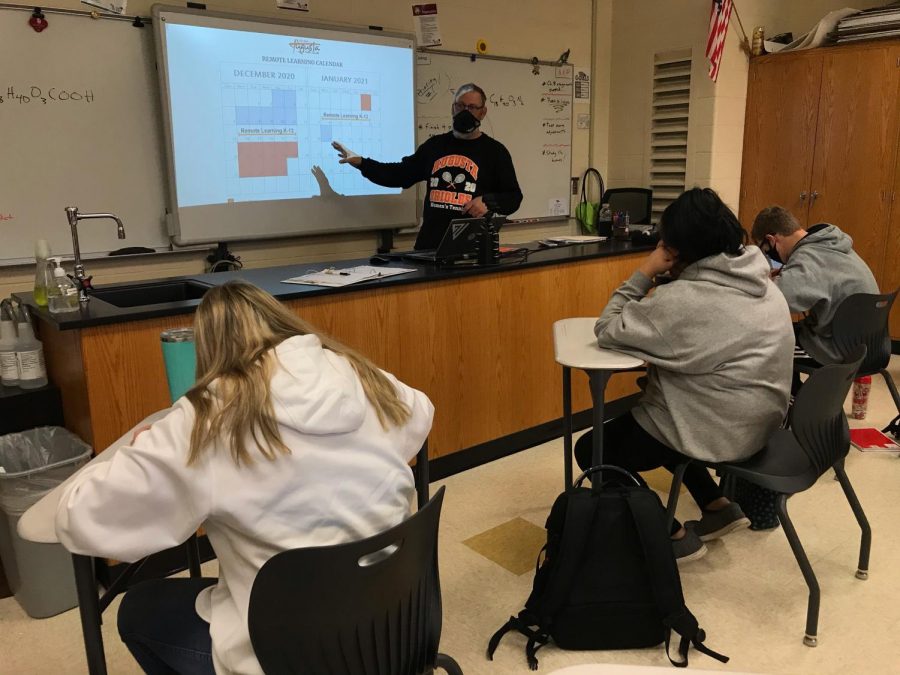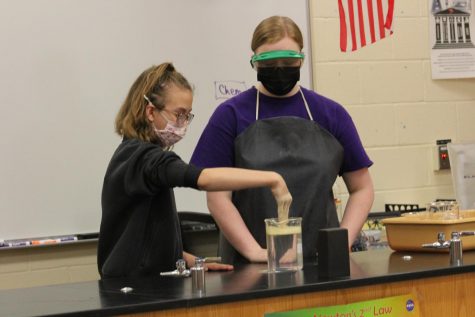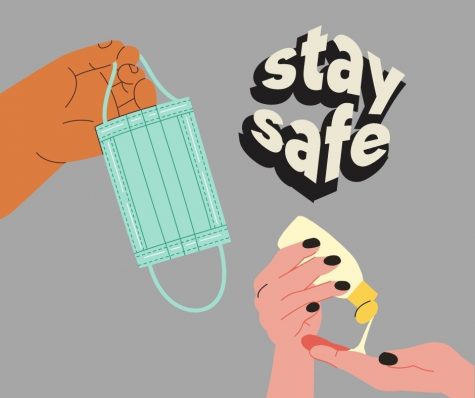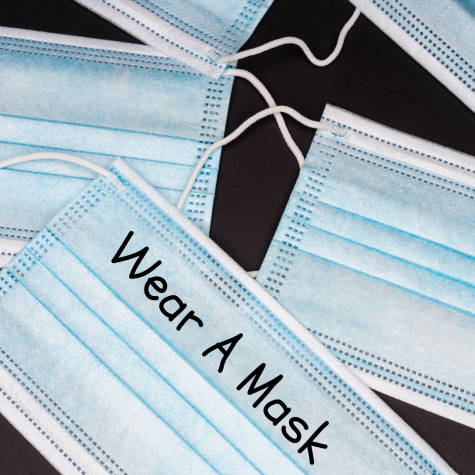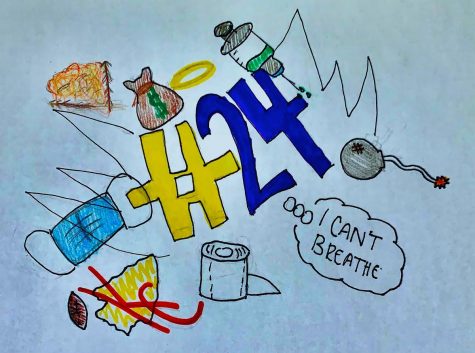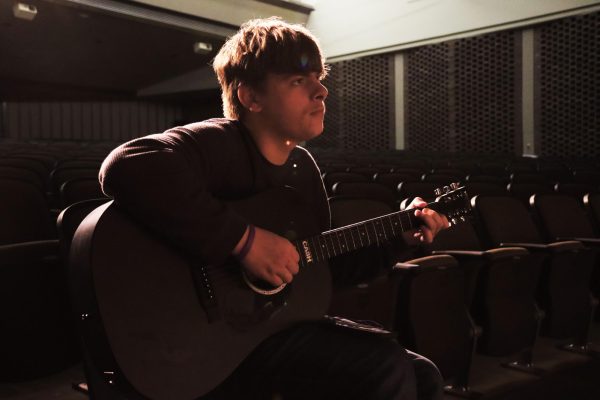Zoom call quality raises concern for remote learning possibilities
Science teacher Nathan Stevens talks to his students about the concerns of how COVID-19 will affect the rest of the semester. Stevens informs students about the board meeting and as of right now, no decision was made on whether to go remote or not.
COVID-19 has affected the year 2020 in a crazy and unusual manner. With the constant quarantines, mask mandates and reasons to go remote, the board went through an uncontrollable rollercoaster of decisions to keep students as safe as possible. A major downside of the pandemic, according to junior Allie Timberlake, is the quality of Zoom calls.
“Sometimes the Zoom calls glitch out,” Timberlake said. “Zoom is definitely not the best solution, but at least it’s something to use. It’s just so frustrating sometimes when it never works, and I get confused in the class.”
Timberlake feels she cannot learn online, and she does assignments to do them, not to learn. Being online the last semester of the school year 2019-2020, Timberlake did not continue to complete any work since homework was not accounted for. Grades were not affected and did not change, so she did not feel the need to turn in assignments
“The most difficult part of being remote was getting the motivation to learn from home, but I did like that I could go at my own pace,” Timberlake said.
Timberlake believes the school should not go back online since students know the risk factors of the virus. She also believes if any student is uncomfortable being at the school, an option of going online for nine weeks is available.
Even with these options, science teacher, Nathan Stevens has more insight into the COVID-19 situation.
“Online is a distinct possibility since a lot of students attended family gatherings over Thanksgiving break, so I’d guess an increase in quarantined students is not far behind,” Stevens said.
According to Stevens, the chances of going online again are quite high. The numbers in Butler County are not dropping and health officials from the Butler County Reaserch page are expecting a spike in cases after Thanksgiving get-togethers. Going online again means one thing for Stevens: zoom calls and if they work correctly.
“Zoom calls are great when they work (for teachers and students), and they’re only for specific purposes – not for everything,” Stevens said. “I do like that we can ‘connect’ with student’s live and answer questions students may have. Although with that, it’s often difficult to hear in a classroom setting and students sometimes don’t have fast enough (or consistent enough) internet service to get through an entire class, let alone a 20-minute lecture.”
With the Zoom calls, Stevens received a huge amount of negative feedback from students who were online.
“I started trying to use Zoom in every class for kids that were quarantined, but got a lot of negative feedback- couldn’t hear, couldn’t see everything, kept cutting out or was ‘choppy’, etc.,” Stevens said. “Especially with higher numbers of students in the call, I haven’t used it for anything other than quick, informational meetings and have used Screencast videos for most of the instruction. I’d be more open to using Zoom more often if the aforementioned technology were available, though.”
Stevens is not worried about going online nor is he worried about how his teaching styles will change. A major part of online learning that concerns Stevens is the number of students who will not complete assignments during the difficult time and how grades will drop tremendously.
Even with these issues, Stevens feels a better way of teaching through this time would be to purchase equipment to help out on Zoom and continue to have students interacting in classes.
“It seems strange when I think about it, but it would be really helpful to have a wireless microphone and portable webcam or one of the SWIVL camera tripods,” Stevens said. “With that, I could be anywhere in the room and still be able to interact with kids online via Zoom. Also, I would be able to record better quality videos, screencast or otherwise instructional, for student viewing and learning.”
With the concerns of students and staff, principal Rick Rivera has taken everything into consideration and brought concerns to the Superintendent who then proceed to bring them to the board meeting, which was held Wednesday. The board decided to wait until next Wednesday to make a decision about going remote.
“With the expected rise of COVID cases and quarantines of students and staff as a result of holiday gatherings, the district is making contingency plans for this possibility of online,” Rivera said. “The CDC has released new quarantine guidelines that will reduce the amount of time exposed individuals would need to quarantine. These new guidelines will reduce the negative effects quarantines have on students and staff.”
Rivera is new to the school this year as principal and taking on a role such as he is and balancing the unpredictable pandemic can be a harder challenge to face.
“I enjoy being at the high school, the majority of my classroom experience was at the high school level,” Rivera said. “Being at the middle school for the past five years and knowing the majority of the students currently at the high school has made a much smoother transition. Every school year has different demands and challenges and COVID certainly has been a challenge for us.”
The major challenge for Rivera is making do with what he can to help staff and students manage and balance the stress levels. Staff members have worked to provide students with quality instruction. They put in hours to refine instruction to meet student needs and is important they are also able to maintain a work-life balance.
“If the number of COVID cases and circumstances warranted a transition to hybrid or remote learning, our hope is that it would be for a limited amount of time,” Rivera said. “We are one of the largest districts in the area to remain an in-person instruction because we value the fact that the best place for students to learn is in the classroom. We would like to remain that way as long as we can continue to do it in a manner that is safe for both students and staff.”
Rivera serves on the Superintendent’s advisory board along with other administrators and district staff. They provide feedback and Superintendent Matt Ward makes a recommendation to the Board of Education. Zoom calls were a part of the meeting and how Zoom has improved during the difficult time period of COVID-19.
“We have chosen Zoom because we felt it was important to have a uniform platform that both students, parents, and teachers would become comfortable with,” Rivera said. “Students and parents would not have to worry about learning various platforms. Zoom has done a good job of listening to feedback and evolving to meet the needs of students and teachers. There are now a number of additional features that serve as safeguards.”
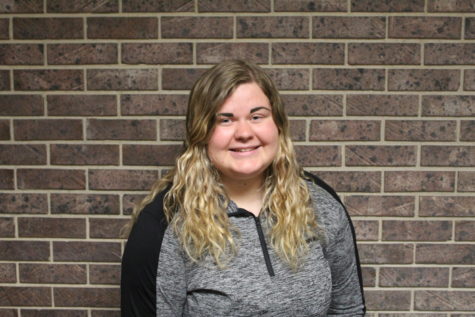
Senior Savannah McMichael is a third year reporter and first year Co-Editor on The Oriole staff. McMichael is a very enthusiastic person who tries to...



